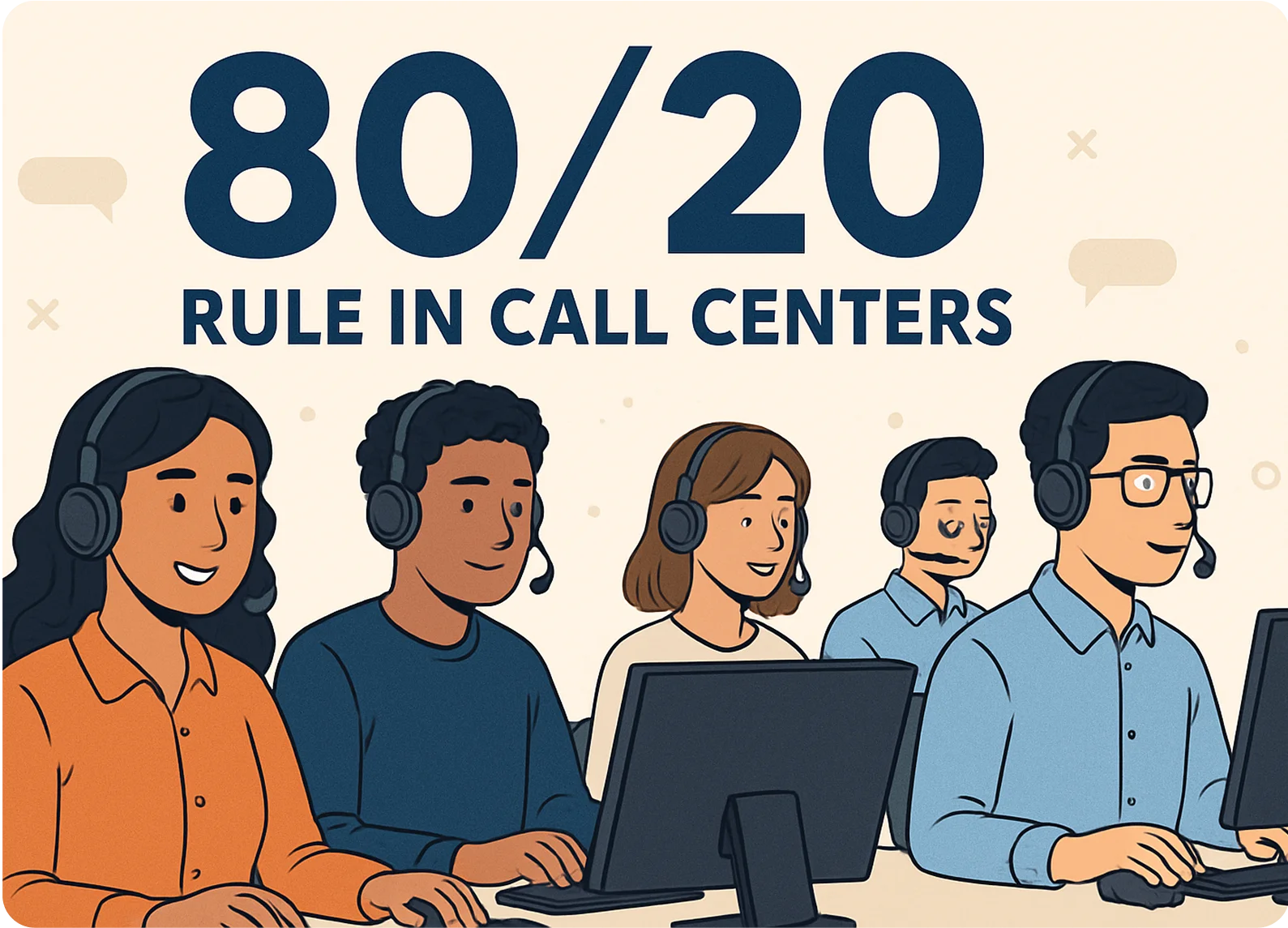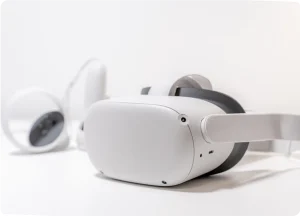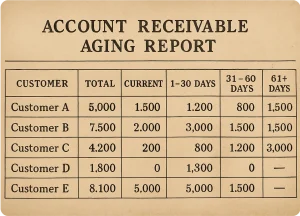And Why It’s More Than Just a Metric
Let’s talk about a number you’ve probably heard a lot in the call center world: 80/20.
It’s tossed around in meetings, stuck in SLAs, and thrown into performance dashboards — but what does it really mean?
And more importantly — does it still matter?
Let’s break it down, simply and clearly.
First, What Is the 80/20 rule?
In the call center world, the 80/20 rule is shorthand for this service level target:
Answer 80% of incoming calls within 20 seconds.
That’s it.
It’s a standard that’s been around for decades — and while it seems simple, it carries a lot of weight.
First, What Is the 80/20 rule?
In the call center world, the 80/20 rule is shorthand for this service level target:
Answer 80% of incoming calls within 20 seconds.
That’s it.
It’s a standard that’s been around for decades — and while it seems simple, it carries a lot of weight.
Why 80%? Why 20 Seconds?
The origin of the 80/20 rule is a bit fuzzy (some say AT&T came up with it in the 1970s), but the idea was
to balance:
- Customer satisfaction (nobody likes to wait forever)
- Operational efficiency (you can’t staff for 100% instant answers)
Research has shown that 20 seconds is roughly the point where most callers start to get frustrated. By
aiming to answer 80% of calls before that threshold, you’re giving your team some flexibility — while
still keeping the customer experience strong.
A report by Call Centre Helper showed that service level is one of the top 3 KPIs used in call centers globally — and 80/20 is still the benchmark in many industries.
But Here's the Real Question:
Is 80/20 Still the Right Goal?
Great question — and the answer is: not always.
Customer expectations have changed. With chat, email, social, and self-service in the mix, answering 80% of calls in 20 seconds may not be the only metric worth chasing.
Let’s look at a few things to consider:
The 80/20 Rule Isn’t One-Size-Fits-All
- Industry matters. A financial service call center may need faster responses than an internal IT help desk.
- Call volume matters. During seasonal peaks, sticking to 80/20 may require overstaffing — is it worth it?
- Customer intent matters. Some calls are urgent. Some aren’t. Should they be treated the same?
In fact, some modern call centers now customize their service level goals based on call type or customer segment. Smart move.
Trade-Offs You Can’t Ignore
Chasing 80/20 at all costs can create unintended consequences:
- Higher labor costs
- Idle agents during slow periods
- Rushed calls and lower quality during busy spikes
In short: hitting the metric might look good — but are you really delivering a better experience?
A Better Approach: Balance + Flexibility
Rather than obsessing over 80/20, the best-performing call centers are asking:
- Are we meeting customer expectations — not just time limits?
- Are we delivering quality interactions, not just quick ones?
- Do we have the right staffing model to adapt in real time?
It’s not about abandoning 80/20 — it’s about putting it in context.
At NCRi Solutions, We Help You Do Just That.
We go beyond surface-level metrics and help our partners:
- Build flexible, data-driven staffing models
- Improve first call resolution AND speed
- Use AI insights to predict call spikes & adjust in real time
- Align KPIs with actual customer experience goals
Because in the end, it’s not about answering fast.
It’s about answering right.
Final Thought
The 80/20 rule is a great starting point — but it’s not the finish line.
If you’re ready to go beyond outdated benchmarks and start measuring what truly matters in your contact center, we are here to help.
Let’s Talk About Your Service Goals
Book a free strategy session with our CX experts at NCRi.
We’ll help you customize performance metrics that actually drive satisfaction — and efficiency.
Schedule a Call or visit www.ncri.com!




